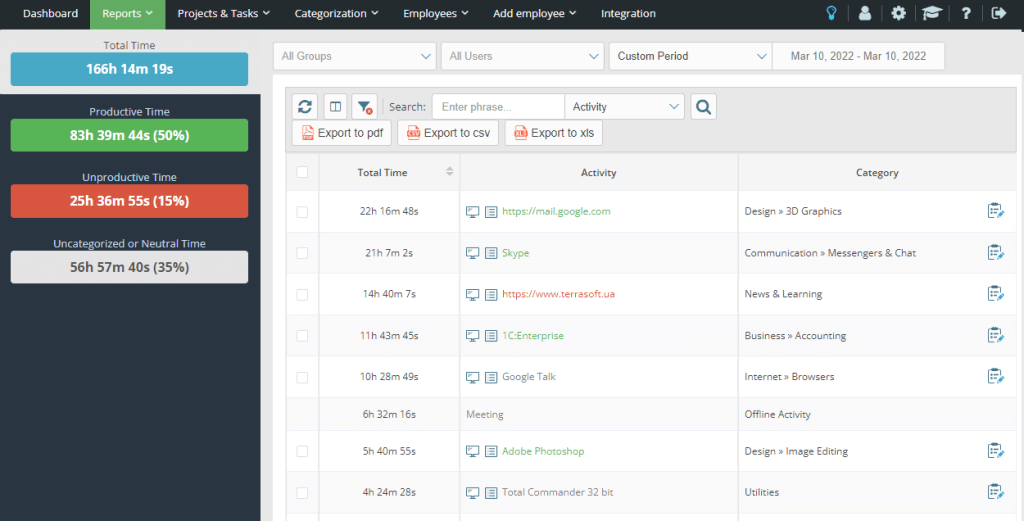Today productivity has become a crucial success factor for both employees and companies as a whole. The effective utilization of working hours enables the achievement of greater outcomes with the same resources. Our experts have compiled 10 proven methods for boosting productivity that can be implemented immediately.
1. Implementing the Pomodoro Technique
The Pomodoro Technique is a scientifically validated approach to time management that involves dividing work into focused intervals separated by short breaks. This method consists of segmenting work into 25-minute blocks followed by brief respites.
Research from the University of California indicates that this approach can enhance productivity by 37% by mitigating mental fatigue. To implement the Pomodoro Technique:
- Set a timer for 25 minutes and concentrate fully on a single task.
- After the 25-minute interval, take a 5-minute break.
- After every four such cycles, take a longer break of 15-30 minutes.
- Evaluate the completed work and the efficiency of time spent.
- Plan the next block of tasks based on the insights gained.
By integrating the Pomodoro Technique, you establish a structured workday with a balance between intensive work and rest, significantly reducing fatigue and improving the overall effectiveness of your efforts.
2. Planning the Workday Using the Eisenhower Matrix
Effective planning is fundamental to productivity. The Eisenhower Matrix assists in categorizing tasks based on their urgency and importance, allowing for a focus on high-priority matters.
A survey of Fortune 500 company executives revealed that 86% of successful managers utilize similar prioritization systems. To implement the Eisenhower Matrix:
- Categorize all tasks into four quadrants: urgent and important, important but not urgent, urgent but not important, and not urgent and not important.
- Address tasks in the “urgent and important” quadrant immediately.
- Schedule time for tasks in the “important but not urgent” quadrant.
- Delegate tasks in the “urgent but not important” quadrant.
- Minimize or eliminate tasks in the “not urgent and not important” quadrant.
- Review your matrix regularly and adjust priorities accordingly.
Consistent application of the Eisenhower Matrix prevents constant task-switching and helps concentrate on truly significant projects that deliver maximum value to your business.
3. Automating Work Time Tracking
Understanding how your time is spent throughout the day is a key factor in enhancing productivity. An automated time tracker accurately records the time allocated to various tasks and provides analytical data for optimizing work processes.
Research by Workfront demonstrates that implementing automated time tracking increases team productivity by 22% by identifying and eliminating time-consuming activities. Benefits of using a timetracker include:
- Precise identification of tasks consuming disproportionately large amounts of time.
- Analysis of productive hours for scheduling critical tasks.
- Real-time progress monitoring for projects.
- Fostering a culture of accountability regarding working hours.
- Reduction of distractions through awareness of work process recording.
By implementing automated time tracking, you gain an objective view of your work, enabling informed decisions regarding resource allocation and process optimization based on real data rather than assumptions.
4. Creating Checklists for Repetitive Tasks
Checklists are a powerful tool for standardizing work processes and preventing errors. Even experienced professionals improve their performance when using checklists for recurring tasks.
According to Harvard Business Review, the use of checklists reduces the likelihood of errors by 47% and shortens the execution time of typical tasks by 28%. To implement this approach:
- Identify repetitive processes in your work.
- Break down each process into clear steps.
- Create a checklist with a sequential list of actions.
- Incorporate timeframes for each stage.
- Update checklists regularly to reflect process improvements.
Utilizing checklists frees your mind from the need to remember all process details, allowing you to focus on the quality of execution and creative aspects of work instead of constantly reminding yourself of the sequence of actions.
5. Implementing the GTD (Getting Things Done) Methodology
The GTD methodology, developed by David Allen, helps systematize all tasks and free the mind for creative work. The essence of the approach lies in creating a reliable external system for storing information, thereby reducing cognitive load.
A survey of GTD users showed that 78% of them experienced a reduction in stress levels and a 32% increase in productivity. Key steps for implementing GTD include:
- Capture all ideas and tasks in a unified system.
- Clarify the specific actions required for each item.
- Organize tasks by context and projects.
- Review all lists regularly.
- Execute tasks according to priorities and available resources.
Proper application of GTD allows for achieving a state of “mind like water,” where you can fully concentrate on the current task without being distracted by thoughts of other pending matters.
6. Optimizing the Workspace
The physical environment significantly impacts productivity. An optimized workspace minimizes distractions and creates conditions for deep concentration.
Research from the Journal of Environmental Psychology indicates that a well-organized workspace can increase productivity by 15-25%. Recommendations for optimization include:
- Minimize visual clutter by removing unnecessary items from the desk.
- Ensure sufficient natural lighting.
- Maintain a comfortable temperature (21-23°C).
- Use ergonomic furniture to prevent physical discomfort.
- Create separate zones for different types of activities, if feasible.
Investments in workspace optimization yield rapid returns through increased concentration, reduced physical fatigue, and an overall improvement in well-being, directly impacting the quality and speed of task completion.
7. Practicing Deep Work
The concept of “deep work,” developed by Professor Cal Newport, involves creating conditions for prolonged concentration on complex tasks without distractions. This is particularly important for creative and analytical professions.
Studies suggest that individuals who practice deep work can achieve up to 400% greater productivity compared to multitasking. Recommendations for implementation include:
- Allocate specific time blocks for deep work in your calendar.
- Disable notifications and other sources of distraction.
- Establish a ritual for entering a state of deep concentration.
- Define clear goals for each deep work session.
- Regularly analyze results and refine the process.
Consistent practice of deep work enhances your ability to concentrate and allows you to perform complex intellectual tasks significantly faster and more effectively, creating a competitive advantage in any field.
8. Utilizing the Two-Minute Rule
The Two-Minute Rule, proposed by productivity expert James Clear, states that if a task can be completed in two minutes or less, do it immediately. This prevents the accumulation of small tasks that create a sense of incompletion.
Practical studies show that implementing this rule can reduce time spent on administrative tasks by 18-23%. For effective application:
- Learn to quickly estimate the time required to complete a task.
- Address small tasks immediately without procrastination.
- Maintain a dedicated list for two-minute tasks.
- Delegate minor tasks if feasible and appropriate.
- Track the number of two-minute tasks completed daily.
Adhering to the Two-Minute Rule significantly reduces cognitive load from unfinished tasks and creates a sense of continuous progress, positively impacting motivation and the overall feeling of control over the workflow.
9. Leveraging the Yaware Time Tracker for Productivity Analysis
Yaware is a Ukrainian company developing intelligent solutions for business process automation since 2015. Our time tracker has helped over 5000 companies optimize costs and enhance team productivity.
Analyzing personal and team productivity is key to continuous improvement. The Yaware time tracker monitors time spent on various tasks and provides analytical reports that help identify potential areas for optimization.

According to internal research of Yaware users, teams utilizing automated time tracking increase productivity by 27% within the first three months. Features contributing to this include:
- Automatic activity tracking with allocation to projects and tasks.
- Analytical dashboards visualizing work patterns.
- Integration with popular project management tools.
- Customizable notifications for productivity declines.
- Regular reports for comparing results and setting goals.
Implementing the Yaware time tracker provides the team with objective data for making management decisions and fosters a culture of productivity based on real metrics rather than subjective feelings or assumptions.
10. Regular Analysis and Optimization of Work Processes
Continuous improvement of work processes is the foundation of consistently high productivity. Regular analysis helps identify potential for optimization and implement more effective approaches.
Research by McKinsey indicates that companies practicing regular process analysis demonstrate 35% higher productivity compared to competitors. The recommended approach includes:
- Conducting weekly retrospective analyses of completed work.
- Identifying processes that consume disproportionately large amounts of time.
- Documenting successful practices that enhance productivity.
- Experimenting with new work methods.
- Measuring the results of changes using specific metrics.
By establishing a cycle of continuous analysis and improvement, you ensure sustained productivity growth in the long term, distinguishing the most successful organizations from those that only apply short-term efficiency tactics.
Implementing these ten methods for enhancing productivity will transform your work process and achieve significantly better results with the same time investment. The greatest impact can be achieved by combining several approaches according to the specifics of your work.
Begin with one or two methods that seem most relevant to your current challenges and gradually incorporate new practices. Utilizing the Yaware automated time tracker can be an excellent starting point, providing you with objective data for further optimization.

